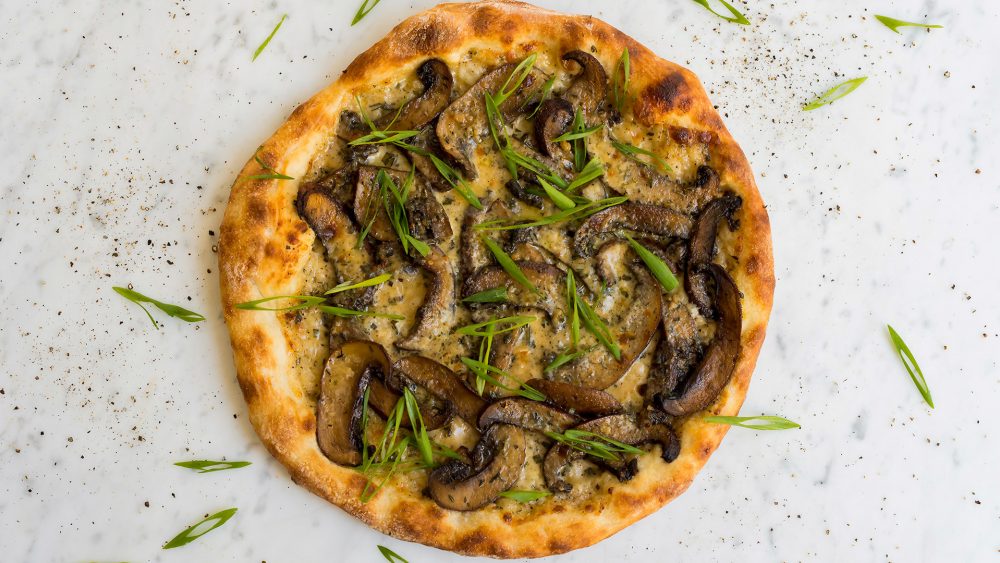But irrational fears aside, why do most cooks remove the gills, and is it really necessary?
What are those gills anyway?
You’re most likely to encounter frilly gills in portobello mushrooms—creminis that are all grown-up. Unlike the gills you find on a fish, these gills have nothing to do with oxygen exchange. They’re not gills at all, but lamella, feathery ribs that live underneath the cap of certain types of mushrooms. Their main function is spore dispersal, and they’re believed to have evolved as a way to increase surface area, thereby increasing the number of spores that can be dispersed.
Gills can also help mushroom foragers identify the mushroom they’re hunting (not all species have them), and can be used as an indicator of freshness—fresh mushrooms have dry, light-colored gills with a faint pinkish hue; if the gills are dark and damp, that mushroom is past its prime.
Mushrooms gills can give your dish a muddy appearance
Mushroom gills are completely edible, but not everyone is jazzed about including them in their dish. While some people claim that they give dishes a distractingly earthy or bitter flavor, I’ve never noticed a significant difference, at least not with my tongue.
Appearance is another matter entirely. When cooked down, the gills release their spores, giving your dish a dark and murky appearance and obscuring other, more vibrant ingredients. This may not seem significant, but we eat with our eyes first—a dull looking dish can prime our palates to expect dulled flavors. Culinary director Wes Martin scrapes them out when making our Roasted Mushroom Pizza with Fontina and Scallions, and that little extra step ensures the mushrooms look golden and enticing on the pie.
Removing the gills can also help with prep work, especially if you’re breaking down the large cap into smaller strips or pieces. Cooking school director Rosie Gill removes them when making our Smoky “Pulled” Portobello Sandwiches. “You want to make sure you clean your portobello mushroom caps so that you can have nice, small matchsticks that will melt in butter,” she explains. “That butter is going to sort of mimic what happens when collagen turns into gelatin in a pork shoulder.”
Another advantage to removing the gills is that they make cleaning portobellos a little easier. Bits of dirt and sand can hide deep in the gills; scraping them out entirely removes the grit from the equation, so all you need is a quick wipe or rinse.
How to remove the gills from portobello mushroom caps
Good news: A common table spoon—not the tablespoon you use for measuring—is the only piece of equipment you need. Pop out the woody stem, and either mince it and stir it into your dish, or simmer it whole in your next batch of stock for an extra hit of umami. If you don’t plan on making stock soon, you can store them in a zip-top bag in the freezer.
To remove the gills, gently insert the tip of your spoon under the edge of the gills to pry them off in chunks. Once they’ve all been scraped out, you can get rid of any residual bits with a quick rinse, or simply wipe the cap out with a damp paper towel. Proceed with your dish as usual, enjoying the clean, not-at-all-muddy appearance of your expertly prepared portobello caps.
For more Mushroom Week content, learn how to grow your own lion's mane at home, then use them to make lion’s mane mushroom tacos; Read Hannah Packman’s favorite way to go meatless; Watch Rosie Gill make smoky "pulled" portobello mushroom sandwiches; And let Wes Martin teach you the proper way to clean mushrooms.
Join the conversation on Facebook, Instagram, TikTok and Pinterest.
And if you're looking for more Milk Street, check out our livestream cooking classes with our favorite chefs, home cooks and friends for global recipes, cooking methods and more.




